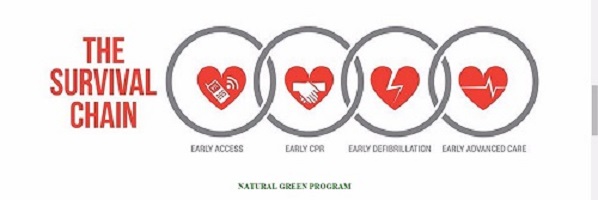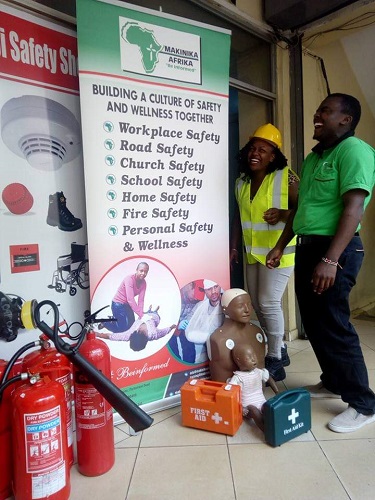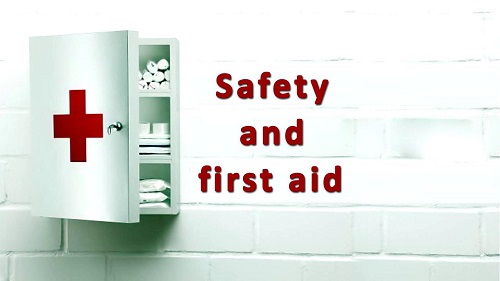Although a terrorist attack upon a school in Kenya in the has been improbable until the Garissa University College attack, the first step toward preparedness is admitting that it is at least possible that terrorists could strike a school or schools in our country.
I have been involved in the teams that designed several policies in Kenya like Emergency Medical Service policy, Fire Safety Policy, DMM Policy etc, and I feel there is a gap when it comes to the safety of our schools and churches in relation to safety preparedness.
With the onset of war and heightened terrorist alerts, school principals need to create and test terrorism preparedness plans of their own, according to some school security consultants. Well-thought-out plans, involving school staff and community agencies, can do more to quell anxiety than simply stocking up on duct tape. It is fundamental to develop and implement a terrorism preparedness plan.
Some experts are however against having a program to sensitize students on terrorism awareness though some institutions like Kenyatta University and others have taken the step. They have raised uncertainty about what might happen next, increasing stress levels. There are things you can do to prepare for terrorist attacks and reduce the stress that you may feel now and later should another emergency arise. Taking preparatory action can reassure you and your children that you can exert a measure of control even in the face of such events.
A terror attack upon Kenyan schools would create fear and panic, disrupt the economy if the “business” side of school operations were shut down on a large scale, and instill a lack of confidence in our school and community leadership. Such terror tactics have already been employed elsewhere including attacks upon schools and school buses in the Middle East, and most recently the Garrisa University terror attack. While it may not be a probability that terrorists will strike our schools, we must acknowledge that it is a possibility and take reasonable steps to prevent and prepare for such an incident.
The vast majority of schools have not taken into account in their crisis planning all of the issues related to terrorism. Some issues, such as handling bombs and bomb threats, creating emergency communications plans, and preparing for gunfire on campus should already have been in the plans. New issues such as mail handling procedures in the event of an anthrax scare or a suspicious package, preparedness for chemical and biological attacks or food contamination, stocking adequate levels of food for extended needs, and a host of others simply have not been considered.
To me, it is such a clear-cut necessity and common-sense approach. Part of it is acknowledging that schools are part of the community, and part of it is the larger school security issue. If we are going to spend money on protecting airports, embassies, malls, and military camps, we certainly should spend money on protecting schools, and make that same level of commitment.
Concern that parents, students, and teachers would overreact to the topic of terrorism preparedness could be one reason for principals’ reluctance to address it. However, fear is best managed through education, communication, and preparation. By not addressing these issues and operating with ‘ostrich syndrome,’ schools are actually creating more fear and panic among parents and school officials. The key rests in context, balance, and reasonable efforts. And of course, discussions with students must be age and developmentally appropriate.
Schools should respond by creating general disaster kits that included maps, keys, student lists, flashlights, phone books, and duct tape, and establishing a simple evacuation plan or lockdown plan, but one crisis management plan does not fit all catastrophes. An Incident like a shooting or a fight is much different than responding to a terrorist attack.
Among the recommendations that I would give through my experiences are the following:
- Schools should develop a viable, carefully considered emergency plan. The plan should be known to parents, teachers, and school personnel. It should be available on the first day of school.
- The emergency plan should include detailed evacuation procedures with several alternative destinations, a procedure for contacting parents regarding the location of their children, and a procedure that will identify who may pick-up the child if a parent is not immediately available.
- Schools should have emergency contact information for each child; that information must be accessible in a crisis.
- Schools should provide counseling in the aftermath of an emergency for children and the larger school community. Parents need to remain mindful of the extra support and nurturing their children will require.
- Parents and other adults faced with an emergency must stay calm, focused, and mindful that their actions and comments will largely determine their children’s responses. Children will look to the adults for direction and emotional guidance.
- Encourage school personnel to maintain a “heightened awareness” for suspicious activity and to report same. This may include suspicious vehicles on and around campus, suspicious persons in and around school buildings including those taking photographs or videotaping, suspicious packages around the building perimeter and/or in the school, and suspicious information seeking efforts by phone or by unknown “visitors”.
- Provide special attention to perimeter security and access control issues. Have clearly defined perimeters for schools through the use of fences, gates, environmental design, signage, and other professional security measures. Use designated parking areas especially for visitors and register staff and student vehicles. Provide supervision and monitoring of parking lots and outside areas as appropriate. Train custodial, maintenance, and grounds personnel on identifying and handling suspicious packages and items found on campus. Establish routine inspections of the building and grounds by trained facility personnel. Secure roof hatches and eliminate structural items that facilitate easy access to school roofs. Make sure that classroom windows are secured at the end of the school day. Utilize security technology and devices for monitoring and controlling exterior facilities as defined by professional security assessments.
- Review staffing and supervision plans. Stress the importance of adult supervision before, during, and after school, both inside school buildings and on campus, and in common areas such as hallways, stairwells, restrooms, cafeterias, bus areas, and other high-traffic areas. Encourage staff to maintain a heightened awareness during recess, physical education classes, drop-off and dismissal, and other outside activities. Examine staffing levels and procedures for security personnel, school resource officers and other police personnel, and associated protection personnel.
- Maintain a proactive effort of visitor access and control. Reduce the number of doors accessible from the outside to one designated entrance. Stress the importance of staff greeting and challenging strangers, and reporting suspicious individuals. Review security procedures for after-school and evening activities and building use.
- Verify the identity of service personnel and vendors visiting the school, including those seeking access to utilities, alarm systems, communications systems, maintenance areas, and related locations. Do not permit access and report suspicious individuals representing themselves as service or delivery personnel who cannot be verified. Maintain detailed and accurate records of service and delivery personnel including a log (signed in by school personnel) of the full names, organization name, vehicle information (as appropriate), and other identification information.
- Evaluate security measures at school transportation facilities. Assess emergency plans involving buses and other transportation issues.
- Evaluate food and beverage service stock, storage, and protection procedures. Determine if schools have adequate water, food, and related supplies in the event that students and staff would have to be detained at the school for an extended period of time beyond normal school hours. Examine measures for securing access to food and beverage products and food service areas during normal food service periods and after hours.
- Assess school health and medical preparedness. Evaluate school nurse staffing levels. Make sure that schools maintain an adequate number and level of emergency kits and medical supplies. Maintain a stock of at least three day’s worth of medications for students required to have medications at school. Consider offering first aid/ first responder training to faculty members who are interested in volunteering for such training so as to increase the number of trained individuals available to assist in the event of medical emergencies.
- Conduct a status check of emergency communications mechanisms. Be sure that two-way radio units and cell phones are functioning, and have back-up batteries charged. Make sure that the public address system is fully functioning. Test the fire alarm system. Review procedures for emergency communications with parents, notify parents in advance how school officials will communicate with them in an emergency (media, email, texts, social media sites, etc.), discuss importance of parents not flocking to the school if directed during an active crisis, review family reunification procedures and communicate other relevant information to ease parent concerns.
- Review procedures for mobilizing mental health services for students and staff in the event of a crisis. Plan in advance how adults will communicate with children in a time of crisis. Discuss approaches for age and developmentally appropriate communications with students about violence and threatening issues. Be familiar with community mental health resources for families and have plans for securing supplemental mental health services from outside of the school/district in a major crisis.
- Evaluate and enforce employee screening procedures. Review guidelines for subcontractors and identify all individuals working on school property.
- Identify higher-risk facilities, organizations, and potential terrorist targets in the community surrounding schools. Such entities might include military facilities, government offices and facilities, power plants, airports and airport flight paths, railroads, chemical companies, etc. Develop appropriate security countermeasures and crisis preparedness planning guidelines accordingly.
- Develop, review, refine, and test crisis preparedness guidelines. Be sure to have guidelines for both natural disasters and acts of violence. Particular procedures for handling bombs, bomb threats, hostage situations, kidnappings, chemical and biological terrorism, and related information should be reviewed. Review with staff their specific roles and responsibilities consistent with your crisis guidelines. Identify back-up crisis team leaders in case normally assigned leaders are not at the building or are unable to lead.
- Maintain a balanced, common-sense approach to school safety and security. School and safety officials should maintain a heightened awareness for potential spin-off incidents. In light of the nature of the national incidents, particular awareness and preparation for possible spin-off incidents involving bomb threats, suspicious devices, and hate crimes may be worthy of consideration. It would also be prudent for school officials to develop, refine, and/or review with staff their policies and procedures related to school threat assessment and threat management.
- Communicate hotline numbers and other methods that students, parents, staff, and members of the school community can use to report safety and related concerns.
- Make the availability of counseling and psychological services known to students, staff and parents. Be sure that adequate mental health services are available, if needed. Acknowledge and monitor reactions of faculty and staff, too, in terms of being sensitive to their anniversary reactions.
- Be sensitive to security concerns if considering school field trips over the holiday.
It’s so hard to prepare for an event like this, but parents should make sure that the school has emergency contact information on the first day of school. - All schools should have an outside meeting place established in case of evacuation; for example, another school within walking distance or open ground. This is a designated emergency assembly point.
Safety and Security starts with me, you, all of us. Let us be vigilant and mindful of our student’s safety.
More related school safety information are available on https://www.facebook.com/pg/makinikaafrika.org/videos/ and https://youtu.be/zZvi9puZEL8



















